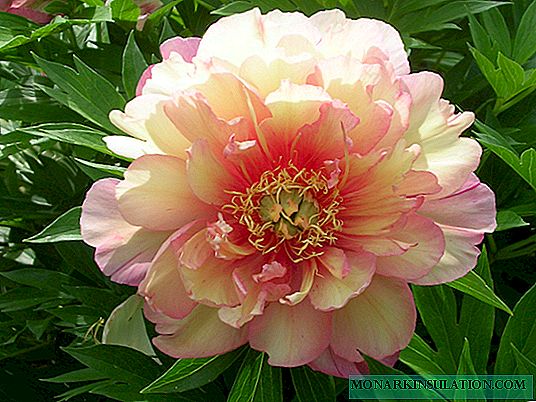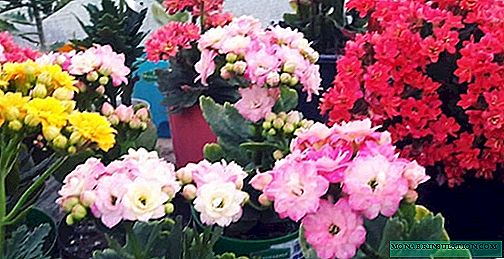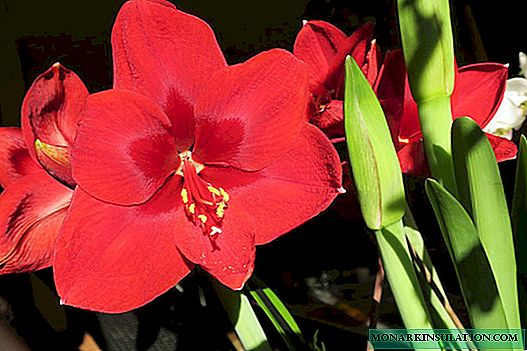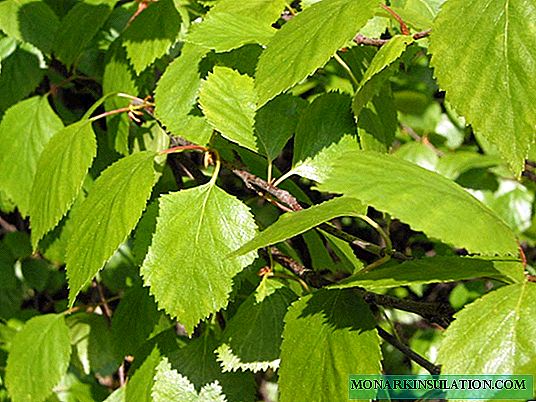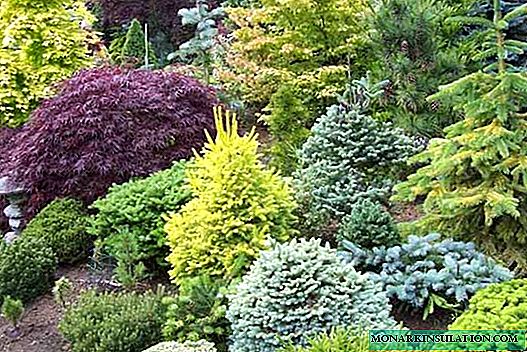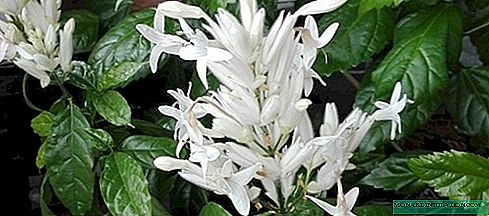Fir (abies) - an evergreen tree or shrub from the Pine family. Externally, the plant is very similar to spruce, and in structure and direction of growth of cones - like cedar. Most representatives are distributed from the tropics to the Arctic Circle of the Northern Hemisphere. The largest number of firs is concentrated in the west of Canada, the USA and in East Asia. Depending on the type of fir, they are heat-loving or frost-resistant, but everyone is sensitive to drought and stagnation of water. Fir is used in the woodworking industry, landscaping, as well as in traditional medicine.

Botanical Description
Fir is an evergreen perennial in the form of a tree or shrub. Its pyramidal crown can be translucent or dense, narrow or sprawling. The height, depending on climatic conditions and species, is 0.5-80 m. The rhizome is predominantly pivotal, but it is located shallow (up to 2 m from the soil surface). Young trunks and branches are covered with a smooth gray-brown bark, which over the years is covered by vertical deep cracks. The branches grow annular, almost perpendicular to the trunk or have an ascending character.
On young shoots needles and tarry buds are located. The flat, not too stiff needles are narrowed at the base. They have solid edges and 2 white stripes at the bottom. The needles grow comb-wise in two planes. The needles are solitary and painted in dark green, sometimes bluish-silver. Their length is about 5-8 cm.














Fir is a monoecious plant. She dissolves male and female cones. Male strobiles resemble earrings and grow in groups. Due to the large amount of pollen, they acquire a straw yellow or reddish color. Female cones of a cylindrical or ovoid shape grow on erect rods directed upwards. Each length is 3-11 cm. Covering scales are attached to the shaft. Initially, pinkish-violet shades dominate their color. Over time, lignified scales turn brown. Already in the autumn of this year, small winged seeds ripen under them. In September-October, the cone completely crumbles, and the seeds fly apart. On the branches only rods are saved.
Types and varieties of perennial
In total, 50 plant species are registered in the genus of fir.
Korean fir. The inhabitant of alpine Asia and South Korea is part of mixed forests. The tree has a wide crown in the form of a cone. It grows up to 15 m in height. Light gray bark casts a red-brown or purple hue. Thick needles 10-15 mm long are distinguished by a hard surface and a saber-like shape. She has a dark green color. Cylindrical cones of violet-purple color grow 5-7 cm in length. Popular varieties:
- Silberlok - a low (up to 200 cm) tree of conical shape covered with dark green needles with silver-white stripes at the base;
- A diamond is a dwarf (0.3-0.60 m) plant with an oval bright green crown.

Siberian fir. A slender tree with an openwork crown grows 30 m in height. Almost from the ground itself, it is covered with thin branches with smooth dark gray bark. Gradually, deep cracks appear on the cortex. The variety gives off a large amount of fragrant transparent resin (fir balm). Dark green needles with wax coating last up to 7-10 years. Flowering occurs in May, and fruit ripening occurs in September-October.

Balsam fir. The inhabitant of North America is found off the coast of the Atlantic and Pacific oceans. It is a slender tree with a height of 15-25 cm with a conical crown. The needles 15-25 mm long have a blunt edge and a small notch at the end. Light streaks are visible at the base of the glossy dark green needles. Oval violet strobiles grow 5-10 cm long and 20-25 mm in diameter. Varieties:
- Nana is a low, open bush that is 0.5 m high and up to 2.5 m wide. It differs in short (only 4-10 mm in length) dark green needles;
- Piccolo is a rounded bush up to 40 cm in diameter with dense, closely spaced branches strewn with dark green needles.

Caucasian Fir (Nordman). Trees about 60 m in height are found along the Black Sea coast of the Caucasus and Turkey. They have a narrow crown in the shape of a cone. Due to the high density, it almost does not transmit light. The kidneys are devoid of tar. Dark green needles grow 1-4 cm in length. In early May, green cones appear, which gradually turn dark brown. The length of the cones is 12-20 cm.

Fir Phraser. A tree grows in the mountains in southeastern USA. It has a conical or columnar crown and reaches 12-25 m in height. The bark of young shoots is smooth gray, and the old - scaly red-brown. Short (up to 20 mm) needles have a dark green color. Oblong female strobiles about 3.5-6 cm in length when appear have a purple hue, but then turn yellow-brown. The variety is famous for its good frost resistance.

Monochrome fir (concolor). A tree up to 60 m high and a trunk diameter of 190 cm lives in the mountainous regions of the western United States. It is actively used in the woodworking industry. The plant has a gray smooth bark and branches perpendicular to the trunk. Flat green needles with a light blue or whitish hue are curved sickle-shaped. Their length is 1.5-6 cm. In May, cones appear. Male, smaller, grouped and painted in purple or red. Female, oval grow in length by 7-12 cm. They have a light green tint.
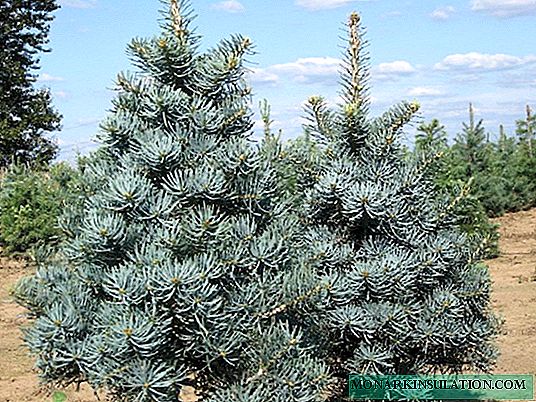
White fir (European or comb). A tree 30-65 m high is common in southern and central Europe. A pyramidal or oval translucent crown consists of horizontal or raised branches, covered with flat dark green needles 2-3 cm long. Female cylindrical cones grow 10-16 cm in length. They change color from green to dark brown.

White fir. A tree 30 m high has a narrow, symmetrical crown of conical shape. Shoots are covered with smooth silver-gray bark. The slightly bifurcated soft needles reach 1-3 cm in length. It is painted dark green and has bluish-white stripes at the base. Cylindrical cones directed upward 45-55 mm long are purple when they appear, but become dark brown.

Breeding methods
Fir is propagated using seeds and cuttings. The seed method is more suitable for species plants. Seed collection is carried out at the beginning of the ripening stage. This can be done until the cones have decayed and the seeds have not scattered over long distances. They are dried and the seed material is extracted. Until next spring, the seeds are left in a tissue bag. So that they are stratified, for several months the bag is placed in the refrigerator or basement. In mid-spring, they are planted in open ground. To do this, prepare a bed. Garden soil is mixed with turf soil and sand. The seeds are buried by 1.5-2 cm, and then covered with a film. Shoots appear after 20-25 days, after which the shelter can be removed. Watering and loosening regularly. During the first year, it is important to remove weeds in a timely manner. For winter, fir seedlings are covered with spruce branches. In the spring they can be transplanted to a permanent place. Initially, plants develop quite slowly. Annual growth is up to 10 cm.

Varietal fir is usually propagated by cuttings. For this, annual shoots from young individuals are used. The length of the handle should be 5-8 cm. It is important that the top has a single kidney, and the heel is preserved at the base (the bark from the mother plant). Cuttings are harvested in early spring, until sap flow begins. It is better to do this at the beginning of the day in cloudy weather. 6 hours before planting, the shoots are soaked in a fungicide solution to prevent fungal infections. It is important to ensure that the heel on the heel does not separate from the wood. Planting is carried out in pots filled with a mixture of leaf and humus soil and river sand. Seedlings are covered with a transparent film, which should not be in contact with the top. For better rooting, lower heating is organized so that the soil temperature is 2-3 ° C above room temperature. Containers are placed in a place with bright, diffused light. Every day you need to ventilate the cuttings and moisten the soil as necessary. Since May they are exposed to fresh air, and again taken to the house for the winter. A full-fledged rhizome develops in a year.
Features of landing and transplanting
Fir grows best in partial shade or in a well-lit place, protected from gusts of wind. It does not tolerate high gas contamination and stagnation of water in the soil. Landing work is planned for mid-spring or early fall on a cloudy day. The earth must be fertile with a slightly acid reaction. Fir grows well on drained loam.

Site preparation begins in 3-4 weeks. They dig it and form a pit 60 cm wide and depth. A drainage layer of gravel, crushed stone or fragments of red brick is laid on the bottom. Then a mound of a mixture of humus, clay, sand, peat, nitrophoska and sawdust is poured. When planting, the roots are distributed evenly, fixing the root neck at the soil level. Free space is filled with a nutrient substrate. It is tamped and a barrel trunk is formed with a small recess for irrigation.
In group plantings between plants, it is necessary to maintain a distance of 2.5-4.5 m. The same distance should be maintained relative to buildings and fences.
Unlike other conifers, fir at the age of 5-10 years tolerates transplantation quite well. Preparation for the procedure begins at 6-12 months. Using a shovel, a circle is drawn at a distance of about 40-50 cm from the barrel to a depth of 1 bayonet. On the appointed day, the procedure is repeated and the earthen lump is hoisted. The plant is extracted with a lump of earth. It is important to try to maintain its integrity and immediately land in a new place so that the rhizome does not dry out.

Fir Care Secrets
Fir is considered an undemanding plant. Most attention will have to be paid to young plants. In the first years after planting, you should regularly loosen and weed the soil so that it is not taken by the crust. It is imperative to mulch the surface with a layer of wood chips, sawdust or peat to a height of 58 cm. It is necessary to slightly remove the mulch from the trunk.
Watering is necessary only with prolonged drought. Decorative moisture-loving varieties are more in need of them. Fir does not like stagnation of water at the roots, so irrigation is carried out in small portions so that the moisture has time to absorb into the ground.

2-3 years after planting, the plants are fed for the first time. In the spring, mineral fertilizer (Kemira Universal) is scattered in the barrel circle.
In early spring, pruning is carried out. Most often, damaged, dry shoots are removed, but the crown can be shaped. You can remove no more than 30% of the shoot length.
Adult plants easily tolerate even severe frosts and do not need shelter. Young individuals should be protected additionally by mulching the soil with peat and dry foliage to a height of 10-12 cm. It will not be superfluous to cover the base of the trunk or the entire short bush with spruce branches.
Plant diseases rarely disturb fir. Sometimes it is necessary to observe the yellowing of the needles and rusty pillows on the bark (rust). Damaged sprouts are removed completely and treated with fungicide (Bordeaux fluid).
The main pest of the plant is fir hermes (small insect, aphid species). If it is detected, an insecticide should be treated. Most often, gardeners practice preventive spraying in early spring, during the period of insect awakening.

